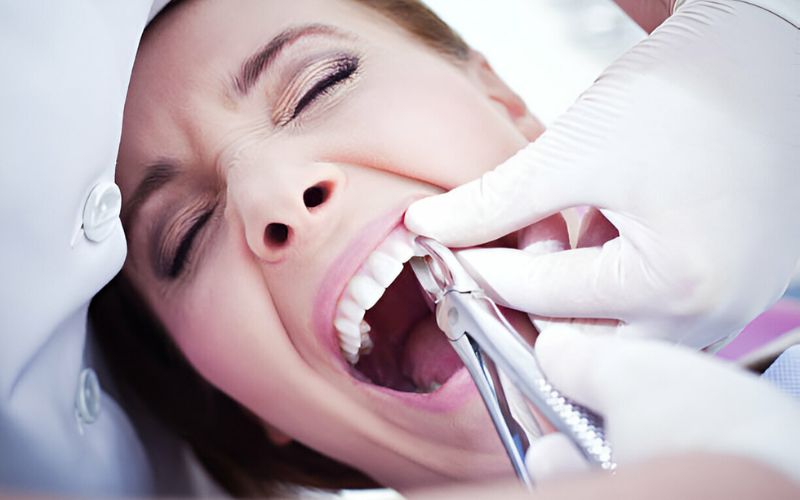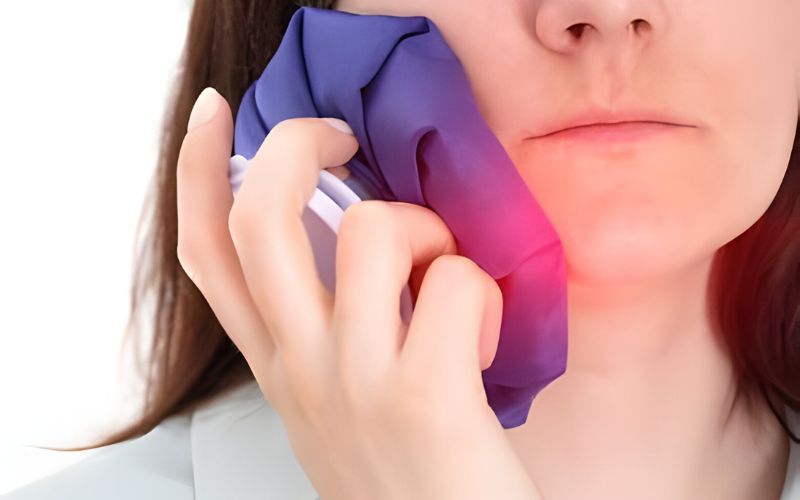Imagine this: You’ve just had a tooth removed, and the dentist’s office is behind you. The numbing agent wears off, and you’re left with a throbbing ache that just won’t quit. The idea of dealing with days of discomfort might seem daunting, but fear not! This blog is here to guide you through the best ways to manage and reduce pain after tooth removal right from the comfort of your home. We’ll provide practical tips and advice to help you get back to feeling like yourself in no time.
What is Tooth Removal?

Tooth removal, also known as tooth extraction, is a dental procedure where a tooth is removed from its socket in the bone. There are several common reasons for tooth removal, including:
- Wisdom Teeth: Wisdom teeth is often removed due to impaction, overcrowding, or infection.
- Decay: Severely decayed teeth that cannot be saved by other treatments.
- Overcrowding: To make space for orthodontic treatment or other teeth.
- Infection: Teeth that are infected and cannot be treated with root canal therapy.
The Procedure
A brief overview of the tooth removal process can help you understand what to expect:
- Before the Procedure: The dentist will take an X-ray to evaluate the tooth and plan the extraction. You’ll receive a local anesthetic to numb the area around the tooth.
- During the Procedure: The dentist will loosen the tooth using an elevator and then remove it with forceps. If the tooth is impacted, it may be removed in pieces.
- After the Procedure: You’ll be asked to bite down on a gauze pad to stop bleeding and form a blood clot in the socket. The dentist will provide post-operative care instructions.
8 best ways to reduce pain at home after tooth removal

1. Apply Cold Compresses
Why it Works: Cold compresses help to reduce swelling and numb the area, providing immediate pain relief.
How to Use: Wrap ice in a cloth or use a cold pack, applying it to the outside of your cheek near the extraction site for 15-20 minutes at a time, with breaks in between. This method can be especially effective in the first 24-48 hours post-extraction.
2. Take Prescribed Pain Medications
Why it Works: Pain medications, whether over-the-counter or prescribed, help to manage and reduce pain effectively.
How to Use: Follow your dentist’s instructions regarding dosage and frequency. Common options include ibuprofen, acetaminophen, and prescribed stronger medications if needed. Always adhere to the recommended dosages to avoid complications.
Nervigesic 300 (Pregabalin Capsules 300mg) is a powerful medication that can be particularly effective for managing severe pain associated with tooth removal. It works by targeting neuropathic pain, a type of chronic pain that occurs when nerves are damaged. This can be especially helpful in cases where the tooth removal process has caused nerve irritation or damage.
3. Use Salt Water Rinses
Why it Works: Salt water rinses help to clean the mouth, reduce bacteria, and promote healing.
How to Use: Mix a teaspoon of salt in a cup of warm water. Gently rinse your mouth with the solution several times a day, especially after meals. Be careful not to spit forcefully as it might dislodge the blood clot that forms in the socket, leading to dry socket.
4. Eat Soft Foods
Why it Works: Soft foods are easy to eat and won’t irritate the extraction site, reducing the risk of pain and discomfort.
What to Eat: Opt for foods like yogurt, applesauce, mashed potatoes, scrambled eggs, and smoothies. Avoid hot, spicy, crunchy, and chewy foods. Soft, cool, or room-temperature foods are the best options during the initial recovery phase.
5. Elevate Your Head
Why it Works: Keeping your head elevated helps to reduce swelling and throbbing by decreasing blood flow to the extraction site.
How to Do It: Use an extra pillow when lying down or sleeping. Avoid lying flat as it can increase pressure and pain. Elevating your head helps minimize swelling and allows gravity to aid in the healing process.
6. Apply Herbal Remedies
Why it Works: Certain herbs have natural pain-relieving properties that can soothe the extraction site.
Options:
- Clove Oil: Apply a small amount of clove oil to a cotton ball and place it near the extraction site for pain relief. Clove oil contains eugenol, which has anesthetic and antibacterial properties.
- Tea Bags: Steep a tea bag (preferably black tea), let it cool, and place it on the extraction site. The tannic acid can help reduce pain and swelling.
7. Stay Hydrated
Why it Works: Staying hydrated aids in the healing process and keeps the mouth moist, which can reduce discomfort.
How to Do It: Drink plenty of water throughout the day, avoiding straws as sucking can dislodge the blood clot and cause dry socket. Proper hydration is essential for overall health and speeds up the recovery process.
8. Avoid Smoking and Alcohol
Why it Works: Smoking and alcohol can interfere with healing, increase pain, and raise the risk of complications such as infection and dry socket.
How to Avoid: Refrain from smoking and drinking alcohol for at least 48-72 hours after the extraction, or as advised by your dentist. Both smoking and alcohol can delay healing and introduce bacteria to the extraction site.
Takeaway
By implementing these tips, you can ease your recovery journey and ensure a smooth healing process after tooth removal. Don’t let the fear of pain hold you back—embrace these strategies and take charge of your post-extraction care for a quicker, more comfortable recovery.


